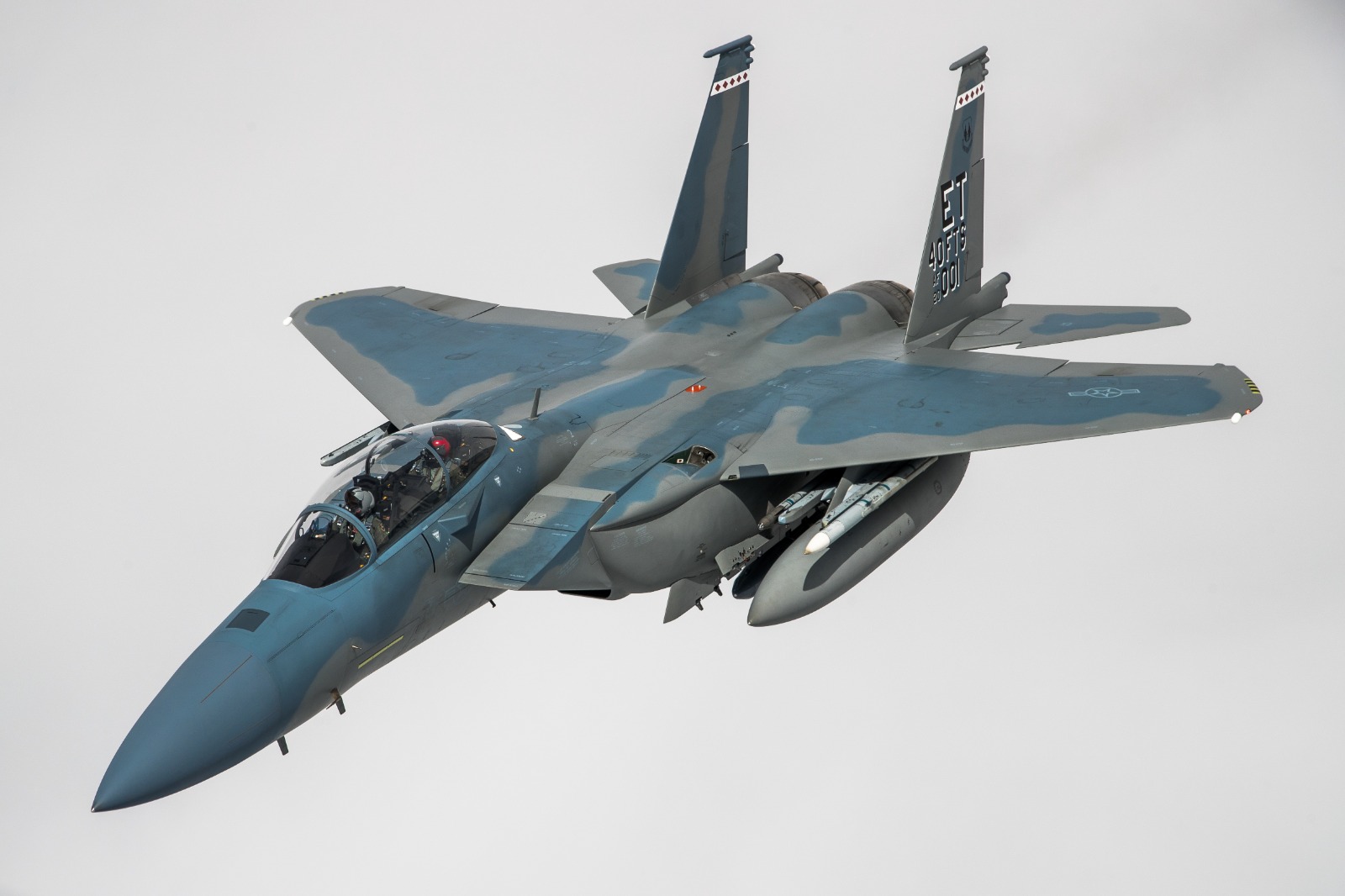The United States Department of Defense has announced a significant restructuring of its fighter jet presence in Japan to improve readiness for a potential conflict with China.
US To Withdraw “Banned” Typhon Missile System From Philippines That Gave Sleepless Nights To China
This modernization plan, unveiled on July 3, includes replacing older US Air Force F-15s and F-16s with newer, more advanced aircraft like the F-15EX and F-35 and making changes to the Marine Corps F-35Bs.
The Department of Defense’s new plan aims to bolster the US-Japan alliance, enhance regional deterrence, and strengthen peace and stability in the Indo-Pacific region. The multi-year effort will involve over $10 billion in capability investments.
A key component of this plan involves transforming Kadena Air Base on Okinawa. Often referred to as the “Keystone of the Pacific,” Kadena is the nearest US military air base to Taiwan and a critical site for Japan’s defense.
According to the Pentagon’s announcement, the base’s 48 F-15s will be replaced by 36 F-15EXs. This change has been anticipated since the US Air Force decided in 2022 to withdraw the F-15C/D aircraft from Kadena Air Base, signaling a strategic adjustment in its regional deployment plans.
To maintain its presence at Kadena during this transition, the Air Force has been rotating fourth and fifth-generation fighters through the base. However, former military officials, defense experts, and lawmakers had previously criticized the choice to implement a temporary measure.
This rotation will continue throughout the recapitalization period, although specific timelines have not been disclosed.
In addition to the changes at Kadena, the US Air Force presence at Misawa Air Base will see a substantial upgrade. The current 36 F-16 Fighting Falcon multirole fighters will be replaced by 48 F-35A stealth fighters. This shift will enhance tactical aircraft capacity and capability at the base.
Marine Corps Air Station Iwakuni will also see changes, including a modification to the number of F-35B jump jets stationed there.
These aircraft, capable of taking off from short runways and amphibious assault ships, will play a key role in supporting the US’s modernization efforts. The Marine Corps will maintain a continuous and rotational aircraft presence at Iwakuni, though further details were not provided.
In a related update, the US Air Force has announced plans to resume CV-22 operations from Yokota Air Base. These Osprey flights had been suspended following a crash on November 29 that killed eight US Air Force special operators.
Major Airpower Upgrade In Japan To Counter China
The Pentagon said the plan was designed to strengthen the US-Japan alliance, bolster regional deterrence, and promote peace and stability in the Indo-Pacific region.
It also added that its plan to station the Joint Force’s most advanced tactical aircraft in Japan demonstrated the ironclad US commitment to Japan’s defense. In April, the US Air Force deployed its cutting-edge F-22 fighter jets to Kadena Air Base, a pivotal location crucial for countering potential Chinese threats.

While the Pentagon’s press release did not explicitly mention Beijing, the deployment marks a major advancement in US airpower in Japan. It positions its state-of-the-art fighter jets directly in areas potentially affected by tensions with China.
The arrival of top-tier US aircraft is particularly significant given China’s swift advances in military technology.
Reports indicate that China’s Wuyishan Air Base, located in Fujian province approximately 600 miles from Kadena, had recently upgraded to include six Chengdu J-20 “Mighty Dragon” stealth fighters. Beijing hypes the J-20 as a strong deterrent against US and allied forces.
With the US’s multi-year deployment plan, the introduction of these advanced fighter jets coincides with China’s increasing deployment of J-20s, changing the regional power dynamics.
Further, the US is strengthening its Pacific bases to withstand possible Chinese missile strikes, which could involve extensive bombardments that might neutralize US and Japanese aircraft, airfields, and command centers.
In May, US Congress highlighted vulnerabilities of US military bases in the Pacific, with 13 members urging immediate action to address these weaknesses.
‘Raptor Salad’ For Lunch! US F-22 Raptor Outgunned, Outmaneuvered By German Eurofighter Typhoon?
They pointed out that China’s current strike capabilities could target all US bases in the region, affecting locations from Okinawa to the US territories in Guam and the Northern Mariana Islands.
Lawmakers warned that China could surpass the air and missile defenses protecting US bases. They cautioned that potential attacks on these bases could have severe repercussions, such as the immobilization of essential air assets, disruption of logistical chains, and a significant reduction in the nation’s ability to respond effectively in a conflict.
- Contact the author at ashishmichel(at)gmail.com





